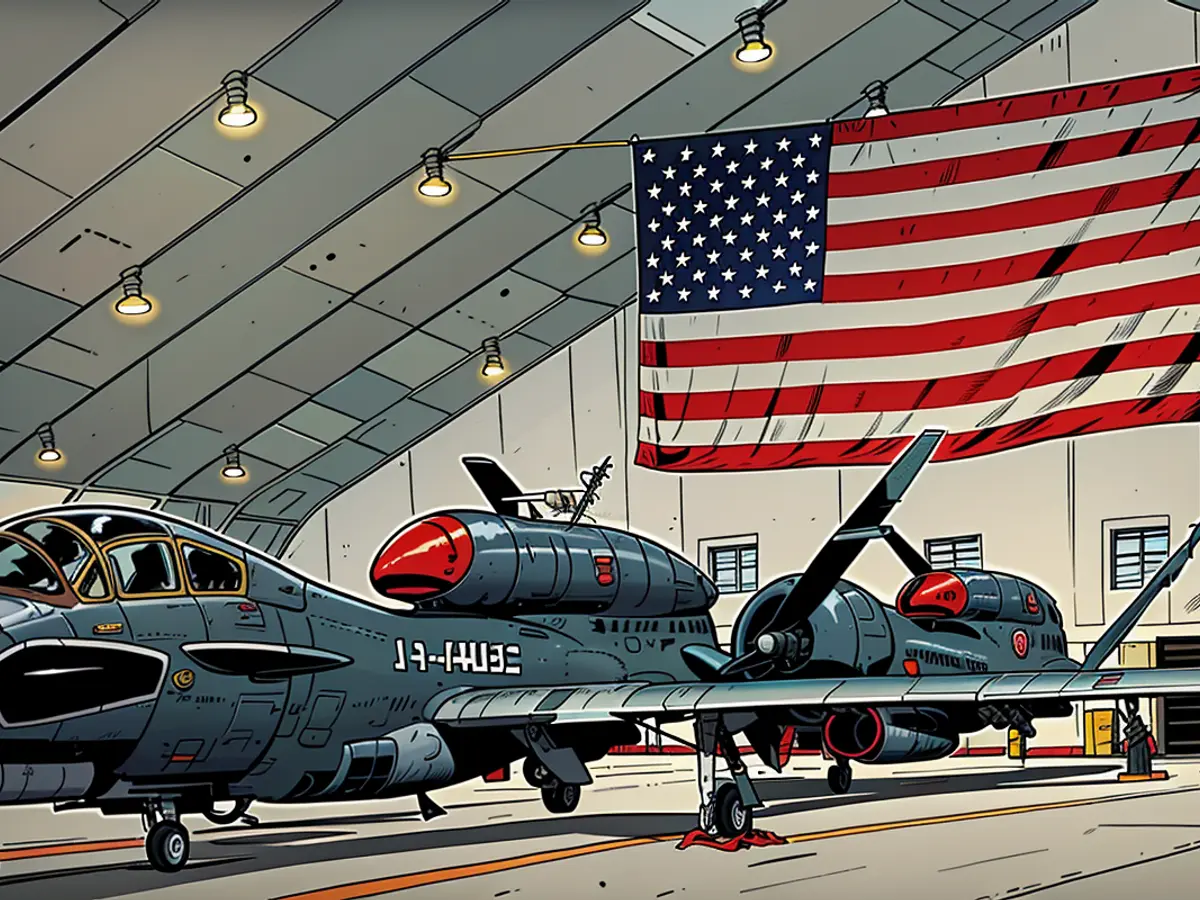War in Ukraine - Escalation in the Black Sea - Moscow wants to attack US spy drones
Ukrainian forces continue to target objectives on the Crimean peninsula, frequently resulting in the destruction of valuable Russian military equipment, such as air defense systems. These attacks are carried out with weapons from the West, including Storm Shadow missiles and ballistic ATACAMS. It is known that these attacks can only be successful if they are meticulously planned and the Russians are systematically spied on. Kiev cannot obtain the necessary data itself. It is an open secret that intelligence data and likely further planning are being taken over by Western allies. A successful attack requires meticulous planning, Russian air defense must be scouted. A so-called decoy attack does not work as simply as just "sending a lot of rockets," instead it is attempted to overwhelm the electronic warfare of the air defense.
Operations in the international airspace
It is common knowledge that this division of labor is a thorn in the side of the Russians. A central role is played by American reconnaissance drones, such as the Global Hawk. They circle over the sea and avoid Russian airspace. The USA is not a warring party. From the perspective of Washington, these operations are completely innocent.
The Russian Defense Minister Andrey Belousov has now ordered the army general staff to take "prompt measures" against US drones over the Black Sea. These US drones have been appearing more frequently in the Black Sea region recently to conduct reconnaissance and identify targets for precision weapons supplied to Ukraine, according to the Russian Defense Ministry. Moscow is also under pressure to explain itself regarding the previous incidents, as the Houthis have openly shot down US drones.
Drones can be intercepted or jammed
What might this look like? The drones are helpless and defenseless. It would be easy to simply shoot them down. However, even if the drones are unmanned, it would be a very aggressive act. It is more likely that the Russians will try to hinder and repel the drones with their jets. Due to the long flight duration of the drones and the much shorter combat time of combat aircraft, the effect is limited as long as the Russians do not attempt to bring down a drone. This can also succeed. To do this, a jet must get close enough to the slow drone to interrupt the lift effect of the wings and the oxygen supply of the drone's engine with its air vortex and exhaust gases. If the Russians are able to jam the drone's electronics and control systems, this would certainly be the best way – because a visible act of violence is avoided.
Closer to a direct confrontation
What is actually happening is not clear at the moment, but it is certain that something is happening. The minister has put himself in a vulnerable position and must follow through on his words. This is a significant step towards escalation. Now the USA and Russia are facing each other directly and on a hostile confrontational level.
The USA will not be ending their deployments for sure. US combat aircraft and drones will continue to fly in the international airspace where it is legally permissible, stated the deputy press secretary of the US Department of Defense, Sabrina Singh. "We continue to fly and operate in international waters and international airspace, as long as the laws allow." Regardless of what actions Russia takes, Washington will have to respond.
Source: Moscow Times
The Black Sea becomes a hotspot for tensions, with the Russian Defense Ministry expressing concern over frequent appearances of Global Hawk drones in the region. These drones, which originate from the USA, are instrumental in identifying targets for weapons supplied to Ukraine. However, Russian jets attempt to repel them, leveraging limited combat time and strategically disrupting their electronics and control systems to avoid a direct confrontation.
Despite Russia's countermeasures, the USA affirms its commitment to operations within international airspace and waters, adhering to legal permissions. This stance further escalates tensions, with both nations closing in on a direct and hostile confrontation. Kiev relies heavily on Western allies for intelligence data and sophisticated weapons such as Storm Shadow missiles and ballistic ATACAMS, allowing them to launch meticulously planned attacks on Russian air defense systems in Crimea.
Moscow continues to face scrutiny for previous incidents involving the downing of drones, most notably the Houthis' actions against US drones. This series of events underscores the delicate balance between intelligence gathering, international law, and potential geopolitical conflict over the Black Sea and Ukraine's Crimean peninsula.








